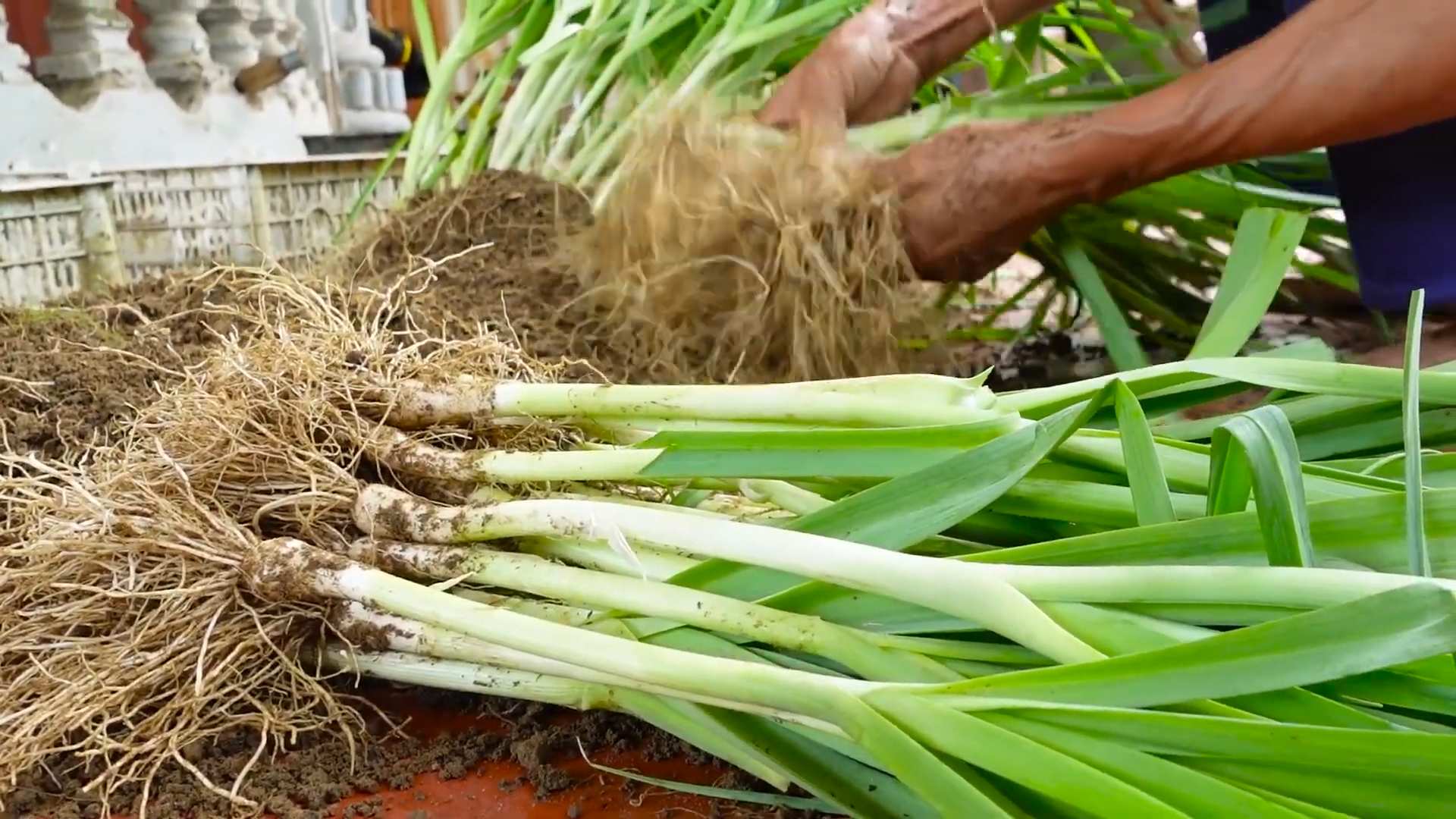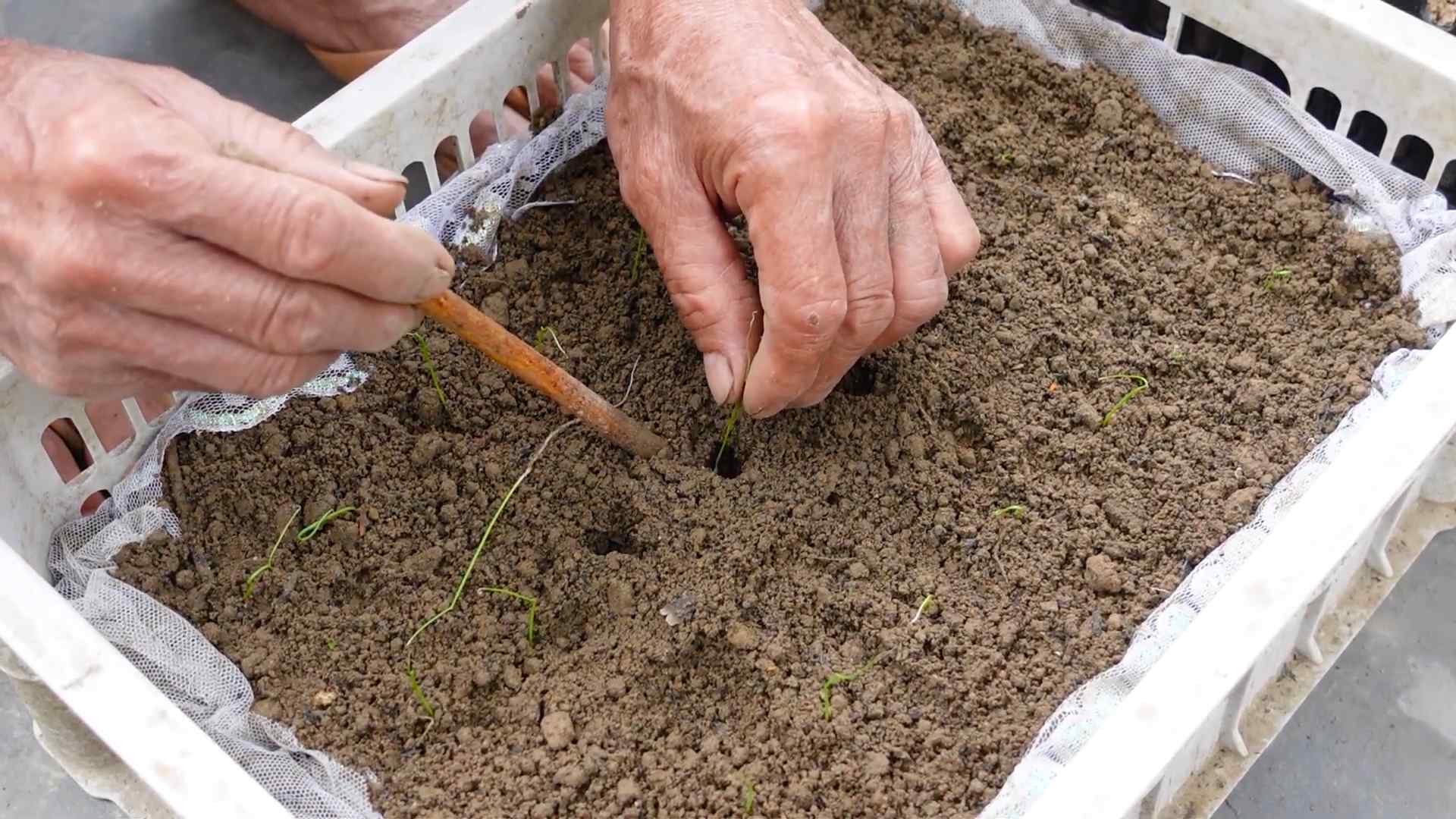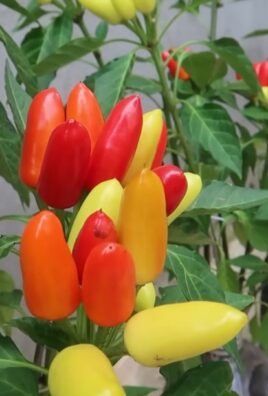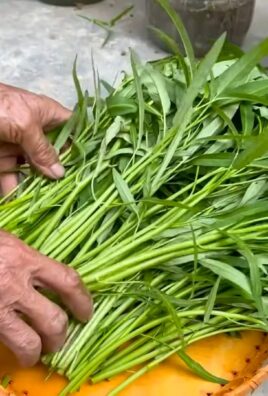Growing Leeks at Home might seem intimidating, but trust me, it’s easier than you think! Imagine stepping outside your back door and snipping fresh, flavorful leeks straight from your garden to add to your favorite soup or stew. No more trips to the grocery store for limp, overpriced leeks – just pure, homegrown goodness.
Leeks have a rich history, dating back to ancient Egypt, where they were prized for their culinary and medicinal properties. The Romans, known for their sophisticated palates, also embraced leeks, spreading their cultivation throughout Europe. Today, leeks remain a staple in cuisines worldwide, adding a delicate oniony flavor to countless dishes.
But why should you bother growing leeks at home? Well, for starters, homegrown leeks taste infinitely better than store-bought ones. Plus, you have complete control over the growing process, ensuring they’re free from harmful pesticides and chemicals. And let’s be honest, there’s something incredibly satisfying about nurturing a plant from seed to harvest. In this article, I’m going to share some simple DIY tricks and hacks that will make growing leeks at home a breeze, even if you’re a complete beginner. Get ready to unleash your inner gardener and enjoy the delicious rewards!

Growing Leeks at Home: A Beginner’s Guide
Okay, so you want to grow leeks at home? Awesome! Leeks are surprisingly easy to cultivate, and nothing beats the flavor of homegrown produce. Plus, they’re super versatile in the kitchen. I’m going to walk you through everything you need to know, from starting seeds to harvesting your delicious leeks. Let’s get started!
Choosing Your Leek Variety
First things first, let’s talk about leek varieties. There are a bunch to choose from, and the best one for you will depend on your climate and when you want to harvest. Here are a few popular options:
* ‘American Flag’: This is a classic, reliable variety that’s known for its long, white shanks and mild flavor. It’s a good all-around choice.
* ‘Giant Musselburgh’: As the name suggests, this variety produces large, thick leeks. It’s very hardy and can withstand cold weather.
* ‘King Richard’: This is an early-maturing variety, perfect if you want to harvest your leeks sooner rather than later.
* ‘Bandit’: A hybrid variety known for its uniform size and disease resistance.
I usually go with ‘American Flag’ because it’s readily available and performs well in my garden, but feel free to experiment and find what works best for you!
Starting Leeks from Seed
Leeks have a long growing season, so it’s best to start them indoors about 8-10 weeks before the last expected frost. Here’s how I do it:
1. Gather Your Supplies: You’ll need:
* Leek seeds
* Seed starting trays or small pots
* Seed starting mix (a light, well-draining mix is essential)
* A spray bottle filled with water
* A warm, sunny location or a grow light
2. Sow the Seeds: Fill your seed starting trays or pots with the seed starting mix. Moisten the mix thoroughly with the spray bottle. Sow the leek seeds about ¼ inch deep, spacing them about ½ inch apart. I usually sow a few seeds per cell to increase my chances of germination.
3. Provide Warmth and Light: Leek seeds need warmth to germinate. Place the trays in a warm location, ideally around 70-75°F (21-24°C). If you don’t have a sunny windowsill, use a grow light. Keep the soil consistently moist, but not soggy.
4. Wait for Germination: Leek seeds typically germinate in 7-14 days. Be patient!
5. Thin the Seedlings: Once the seedlings have emerged and have a couple of true leaves (the second set of leaves), thin them out, leaving only the strongest seedling in each cell or pot.
6. Harden Off the Seedlings: Before transplanting your leek seedlings outdoors, you need to “harden them off.” This means gradually exposing them to outdoor conditions over a period of about a week. Start by placing them in a sheltered spot outdoors for a few hours each day, gradually increasing the amount of time they spend outside. This will help them adjust to the sun, wind, and temperature changes.
Transplanting Leeks Outdoors
Once the danger of frost has passed and your leek seedlings are about 6-8 inches tall, it’s time to transplant them into your garden.
1. Prepare the Soil: Leeks prefer well-drained, fertile soil with a pH of 6.0-7.0. Amend your soil with compost or well-rotted manure to improve its fertility and drainage.
2. Create Trenches: This is the key to getting those long, blanched leek shanks that you see in the store. Dig trenches about 6 inches deep and 6 inches wide, spacing them about 12 inches apart.
3. Transplant the Seedlings: Carefully remove the leek seedlings from their trays or pots. Gently separate the roots if they are tangled. Plant the seedlings at the bottom of the trenches, spacing them about 6 inches apart.
4. Water Thoroughly: After transplanting, water the leeks thoroughly.
Caring for Your Leeks
Leeks are relatively low-maintenance, but here are a few things you can do to help them thrive:
1. Watering: Leeks need consistent moisture, especially during dry periods. Water them deeply whenever the top inch of soil feels dry.
2. Weeding: Keep the area around your leeks free of weeds. Weeds compete with leeks for nutrients and water.
3. Fertilizing: Leeks are heavy feeders. Fertilize them every few weeks with a balanced fertilizer or compost tea.
4. Blanching: As the leeks grow, gradually fill in the trenches with soil. This will blanch the shanks, making them white and tender. You can also use cardboard tubes or other materials to blanch the leeks. Just make sure to leave the top leaves exposed to sunlight. I usually blanch them up to about half their length.
5. Pest and Disease Control: Leeks are generally pest and disease resistant, but they can be susceptible to onion thrips and leek moth. Inspect your plants regularly and take action if you notice any problems. Insecticidal soap can be effective against thrips. For leek moth, consider using row covers to prevent the moths from laying eggs on your plants.
Harvesting Your Leeks
You can harvest leeks at any size, but they are typically ready to harvest when they are about 1-2 inches in diameter.
1. Loosen the Soil: Use a garden fork to loosen the soil around the leeks.
2. Pull the Leeks: Gently pull the leeks out of the ground.
3. Clean the Leeks: Remove any excess soil from the leeks.
4. Store the Leeks: Leeks can be stored in the refrigerator for several weeks. Trim the roots and the tops of the leaves before storing. You can also freeze leeks. Blanch them for a few minutes, then chop them and freeze them in freezer bags.
Troubleshooting Common Leek Problems
Even with the best care, you might encounter a few problems when growing leeks. Here are some common issues and how to address them:
* Yellowing Leaves: This could be a sign of nutrient deficiency, overwatering, or disease. Check the soil drainage and fertilize if necessary. If you suspect disease, remove any affected leaves.
* Stunted Growth: This could be caused by poor soil, lack of water, or pests. Amend the soil with compost, water regularly, and inspect for pests.
* Onion Thrips: These tiny insects can cause silvery streaks on the leaves. Spray with insecticidal soap.
* Leek Moth: The larvae of this moth can tunnel into the leeks, causing damage. Use row covers to prevent the moths from laying eggs on your plants.
Enjoying Your Homegrown Leeks
Now for the best part: enjoying the fruits (or vegetables!) of your labor! Leeks are incredibly versatile in the kitchen. Here are a few of my favorite ways to use them:
* Leek and Potato Soup: A classic comfort food.
* Leek Quiche: A delicious and elegant dish.
* Grilled Leeks: A simple and flavorful side dish.
* Leeks Braised in Butter: A rich and decadent treat.
* Added to Stocks and Soups: Leeks add a wonderful depth of flavor to stocks and soups.
Growing leeks at home is a rewarding experience. With a little bit of effort, you can enjoy fresh, delicious leeks all season long. Happy gardening!

Conclusion
So, there you have it! Growing leeks at home isn’t just a gardening project; it’s an investment in flavor, freshness, and a more sustainable lifestyle. Forget those bland, overpriced leeks from the supermarket. Imagine stepping into your garden and harvesting plump, vibrant leeks bursting with that delicate, oniony sweetness that only homegrown produce can deliver. This DIY trick, from seed to table, empowers you to control the quality of your food and connect with the natural world in a truly rewarding way.
Why is this a must-try? Because it’s surprisingly easy, even for beginner gardeners. Leeks are relatively low-maintenance, tolerating a range of conditions and requiring minimal fuss once established. Plus, the satisfaction of nurturing a plant from a tiny seed to a culinary masterpiece is unparalleled. You’ll not only save money but also reduce your carbon footprint by eliminating the need for transportation and packaging associated with store-bought produce.
But the benefits don’t stop there. Growing your own leeks opens up a world of culinary possibilities. Experiment with different varieties, from the mild ‘American Flag’ to the robust ‘Giant Musselburgh.’ Try blanching your leeks for a sweeter, more tender stalk, or let them mature fully for a stronger, more pungent flavor. Use them in soups, stews, quiches, gratins, or simply sautéed with butter and herbs. The possibilities are endless!
Consider these variations to tailor your leek-growing experience:
* Container Gardening: If you’re short on space, leeks thrive in large containers. Choose a pot at least 12 inches deep and wide to accommodate their root systems.
* Succession Planting: Plant leek seeds every few weeks to ensure a continuous harvest throughout the growing season.
* Companion Planting: Leeks are excellent companions for carrots, onions, and celery, as they deter pests and promote healthy growth.
* Winter Harvesting: Some leek varieties are incredibly hardy and can withstand freezing temperatures, allowing you to enjoy fresh leeks even in the dead of winter. Protect them with a layer of mulch for added insulation.
Don’t be intimidated by the prospect of growing your own vegetables. This DIY trick for growing leeks at home is a simple, rewarding, and delicious way to enhance your culinary creations and connect with nature. We wholeheartedly encourage you to give it a try. Plant those seeds, nurture those seedlings, and watch your garden flourish.
And most importantly, we want to hear about your experience! Share your tips, tricks, and triumphs in the comments below. Let us know which varieties you’re growing, what recipes you’re creating, and any challenges you’ve overcome. Together, we can build a community of passionate home gardeners and inspire others to embrace the joy of growing their own food. So, get your hands dirty, embrace the process, and enjoy the delicious rewards of homegrown leeks!
Frequently Asked Questions (FAQ)
What is the best time to plant leeks?
The ideal time to plant leeks depends on your climate. In colder regions, start seeds indoors 8-10 weeks before the last expected frost. Transplant seedlings outdoors in the spring once the soil has warmed up. In warmer climates, you can sow seeds directly into the garden in the fall for a winter or spring harvest. Generally, leeks need a long growing season of about 120-150 days to reach full maturity.
How much sun do leeks need?
Leeks thrive in full sun, requiring at least 6-8 hours of direct sunlight per day. While they can tolerate partial shade, especially in hotter climates, insufficient sunlight can result in leggy, weak plants with smaller stalks. Choose a sunny location in your garden or ensure that container-grown leeks receive ample sunlight.
What kind of soil is best for growing leeks?
Leeks prefer well-drained, fertile soil that is rich in organic matter. Amend your garden soil with compost or well-rotted manure before planting to improve drainage and nutrient content. A slightly acidic to neutral soil pH of 6.0 to 7.0 is ideal. Avoid heavy clay soils, as they can become waterlogged and hinder root development.
How often should I water leeks?
Leeks need consistent moisture, especially during hot, dry periods. Water deeply and regularly, ensuring that the soil remains evenly moist but not waterlogged. Avoid overhead watering, as it can promote fungal diseases. Mulching around the plants can help retain moisture and suppress weeds.
How do I blanch leeks?
Blanching leeks produces a sweeter, more tender stalk. To blanch leeks, gradually mound soil around the stems as they grow, burying the lower portion of the plant. Alternatively, you can use cardboard tubes or plastic pipes to block sunlight from reaching the stems. Start blanching when the leeks are about 6-8 inches tall and continue until harvest.
What are common pests and diseases that affect leeks?
Leeks can be susceptible to various pests and diseases, including onion thrips, leek moths, and white rot. Regularly inspect your plants for signs of infestation or disease. Use organic pest control methods, such as insecticidal soap or neem oil, to manage pests. Ensure good air circulation and avoid overcrowding to prevent fungal diseases. Rotate your crops annually to reduce the risk of soilborne diseases.
How do I harvest leeks?
Leeks can be harvested at any stage of maturity, depending on your preference. For smaller, more tender leeks, harvest when they are about 1 inch in diameter. For larger, more mature leeks, wait until they reach 2-3 inches in diameter. To harvest, gently loosen the soil around the base of the plant and pull it up. Trim the roots and outer leaves before using.
Can I store leeks after harvesting?
Yes, leeks can be stored for several weeks after harvesting. Store them in the refrigerator, wrapped in a damp paper towel or plastic bag. Alternatively, you can freeze leeks for longer storage. Blanch them briefly in boiling water, then cool them in ice water before freezing.
Can I grow leeks from scraps?
While not as reliable as starting from seed, you can attempt to regrow leeks from the white root end. Place the root end in a glass of water, ensuring that the cut end is submerged. Change the water every day or two. New green shoots will emerge from the top, and roots will grow from the bottom. Once the roots are a few inches long, you can transplant the leek into soil. However, the resulting leek will likely be smaller and less robust than those grown from seed.
What are some good companion plants for leeks?
Leeks are excellent companion plants for carrots, onions, celery, tomatoes, and strawberries. They deter pests such as carrot root flies and onion flies, while also improving the flavor of neighboring plants. Avoid planting leeks near beans or peas, as they can inhibit growth.




Leave a Comment